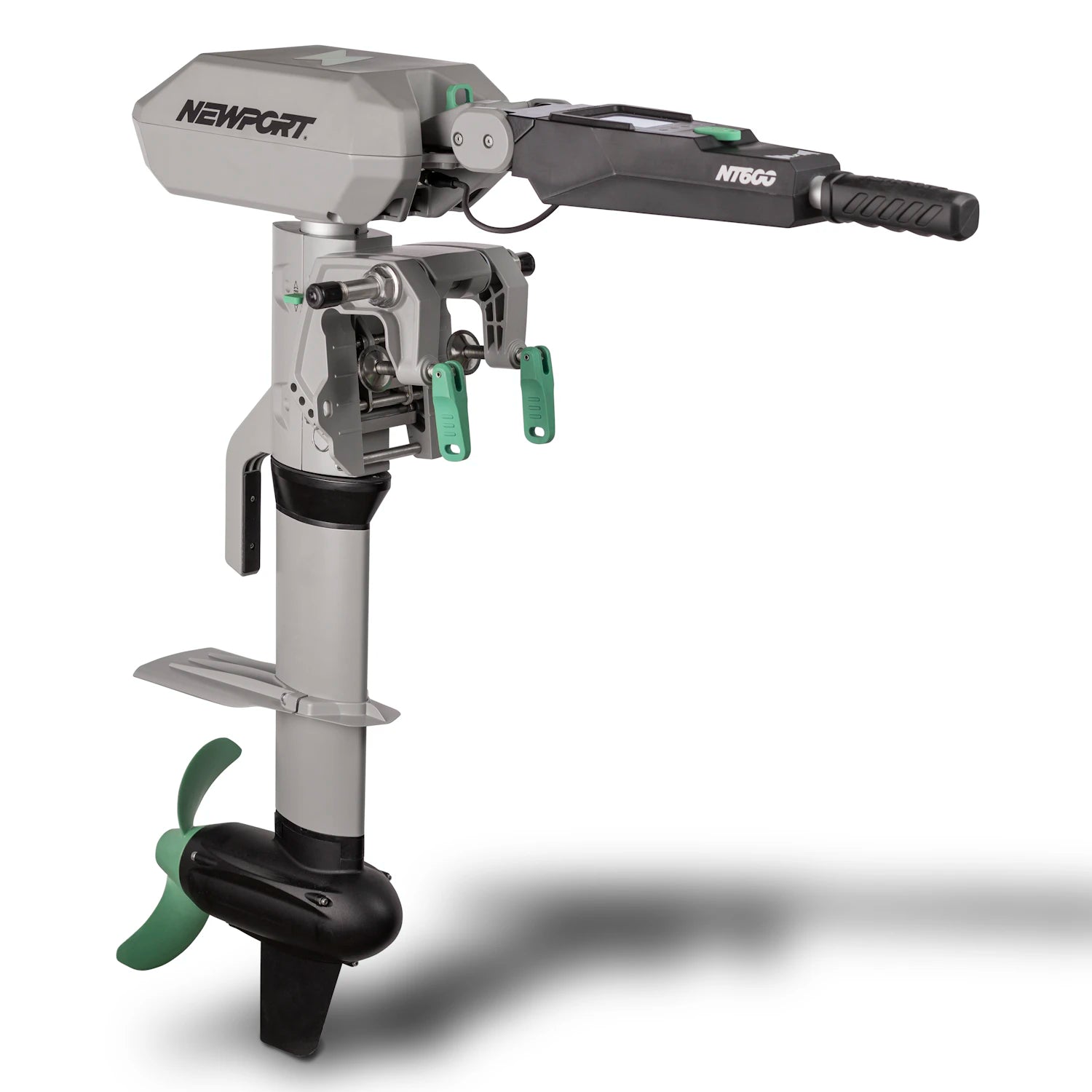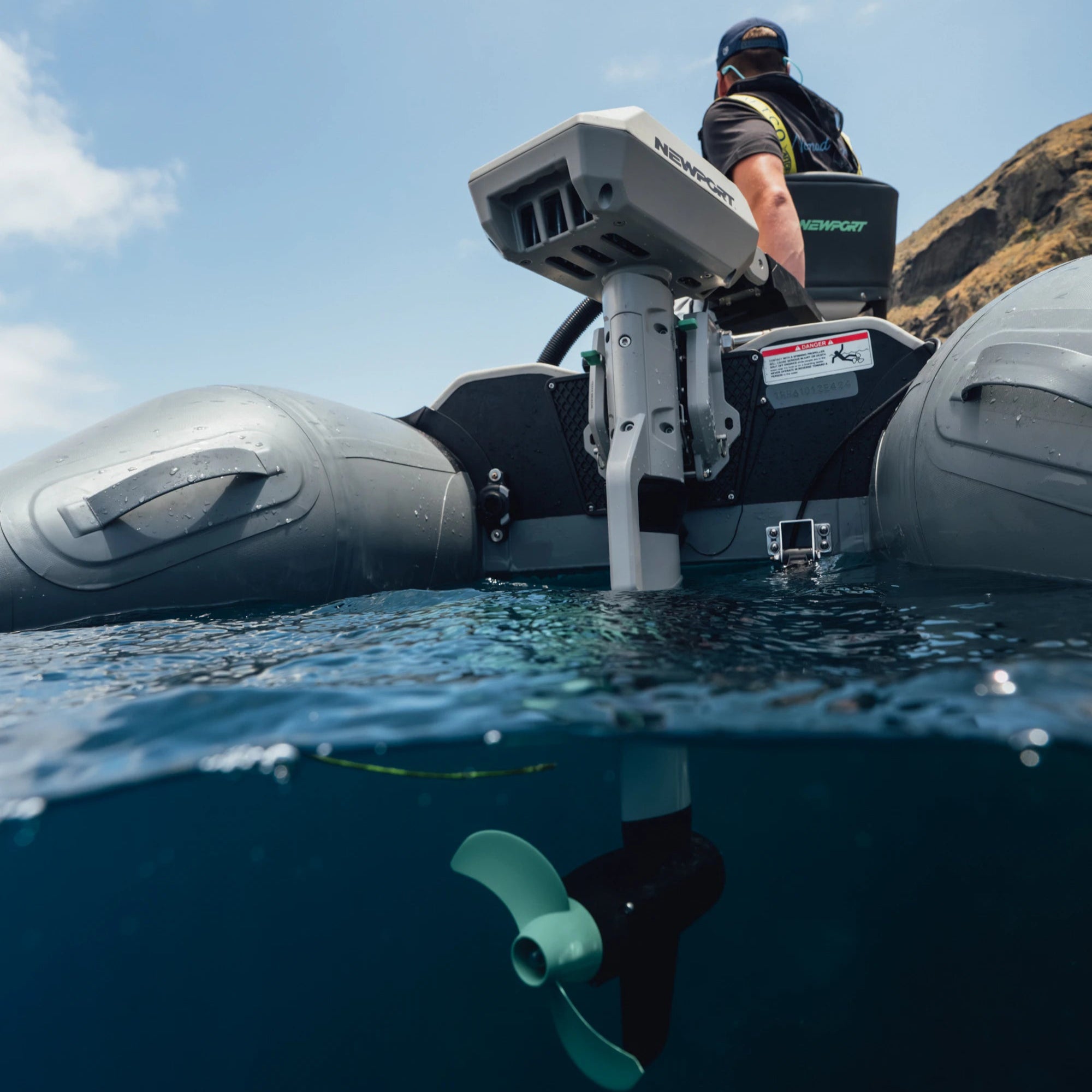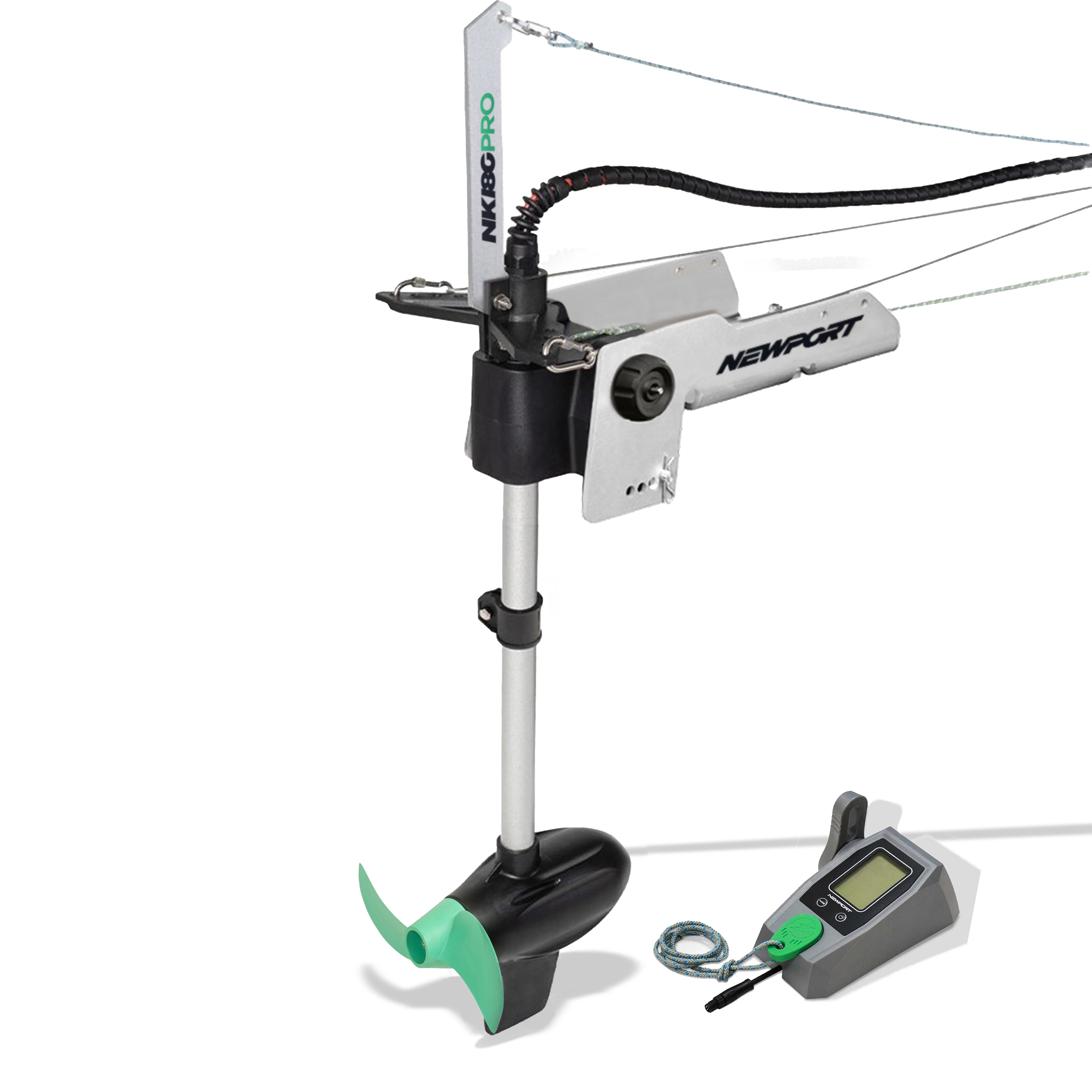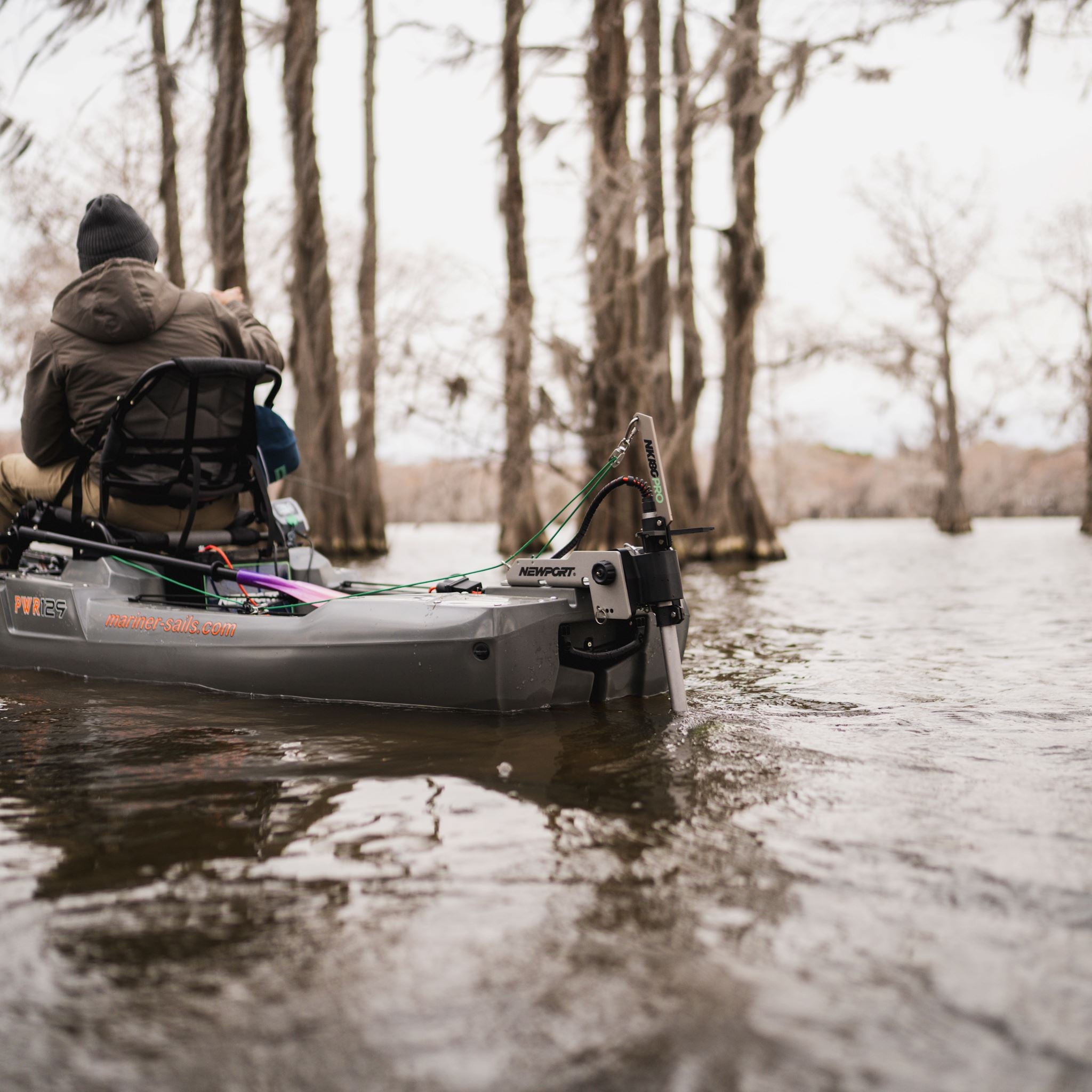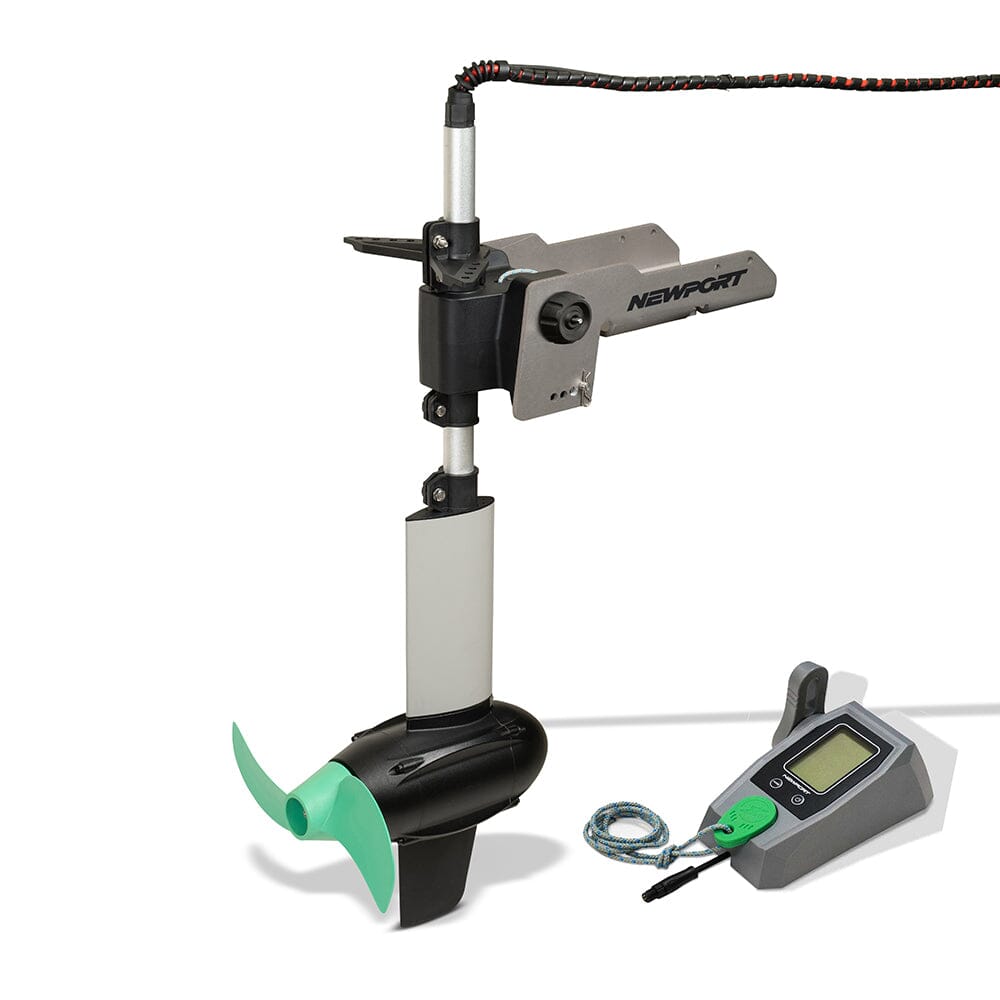In Part I of this guide, we focused on a simple technological overview of trolling motors and their applications. In Part II, we will dig deeper into the technical aspects which determine a motors performance.
Part I - What Trolling Motor Do I Need?
Part II - Trolling Motor Performance and Speed
Part III - Why You Should Never Overpay For Another Minn Kota Trolling Motor
 technical performance: thrust vs. horsepower
technical performance: thrust vs. horsepower

There is a common misconception among boaters that pounds of thrust is directly related to horsepower, unfortunately, it’s not that simple. Horsepower and pounds of thrust are entirely different ways to measure force; thrust is the amount of force APPLIED to an object, example, when I sit on a table, I exert 170lbs of downward force on that table. On the other hand, power or horsepower is a measurement of work, how do you measure work? Work has three components: force, distance, and time. Example, you can be paid hourly for your time, you can be paid for the amount of effort (force) you expend, per vehicle you repair. Or, you could be paid for how far you transport something, this is the distance component of work.
Trolling motors are measured in pounds of thrust, a static (unmoving) force, while gasoline powered engines are measured in horsepower, one HP is 550 ft-pound of work per second. Each is measuring different things, therefore they cannot be compared at face value. To estimate the horsepower of an electric motor, you need to know the watts used by the motor at its fastest speed. Most manufactures provide you with the amps a motor uses at full speed. We can convert this into watts by multiplying amps drawn with how many volts your battery produces (12V for one battery, 24 for two, etc.).
Example: The NV 55lb thrust motor draws 52 amps at full speed and uses one 12V battery.
(52 amps x 12V = 624 watts)
This gives us 624 watts.
Take the watts you calculated and divide it by 746 Watts (1 HP).
(624 watts / 746 watts = .83 HP)
So, our NV 55lb draws 624 watts at full speed, divided by 746 watts, gives us .83. Therefore, the estimated output of our NV 55lb is .83 horsepower.
To read more about this topic, check out our thrust vs. horsepower comparison guide.
 rpms and trolling motor speed:
rpms and trolling motor speed:

A common misconception about trolling motors is that increasing thrust will increase the top speed of a motor, unfortunately, this is not the case. Electric motors differ from gasoline motors, however one measurement that can be applied to each type is Revolutions Per Minute, or RPMs. Defined as the number of rotations around a fixed axis, knowing the maximum RPMs allows you calculate you the max speed it can achieve. Different pound thrust motors with equal RPMs will achieve an identical top speed, this is because RPMs are limited by the amount of Volts which are applied to the speed coil. It’s because of this limitation that electric trolling motors will not be able to perform like a gas outboard.
PROPELLERS
There is more to propellers than many people realize, and computer modeling is rapidly furthering their development. One key measurement on a propeller is pitch; pitch is measured by the distance in inches the propeller would travel or spin through a solid after one full revolution. Increased pitch will result in a greater top speed, but it will lower the maximum RPMs. The lower the prop pitch is, the quicker acceleration you have as the prop cuts through the water more efficiently, but lower top speed you will achieve.
This can be related easily to a oar or paddle. Think of pulling a paddle through the water with the edge of the blade forward, there is little resistance as the blade easily slices or cuts through the water. This is similar to a low pitch angle, you wouldn’t get very far using this method. So you try again at a 90 degree angle, this is a high pitch angle, with the full flat part of the blade pushing the boat forward. Then you try it at a 45 degree angle, the paddle pushes some water, but also wants to travel diagonally through the water. This is a medium pitch angle, that aims to incorporate equal parts acceleration and top speed.
batteries

When it comes to powering your trolling motor, it is important to select a deep cycle battery, also known as a marine battery. Deep Cycle batteries are designed to power electronics by releasing stored energy slowly over long periods, allowing them to be completely discharged and fully recharged without damaging the battery. Starter batteries on the other hand, are designed to crank a combustion engine, these discharge a large amount of current for a short period of time, and are degraded each time the charge drops too low. Using a starter battery with a trolling motor will greatly lower its lifespan and will eventually cost you a battery.
There are two types of lead acid batteries: wet-cell and sealed lead-acid. Wet-cell lead acid batteries are less expensive than sealed batteries, but require more maintenance and are susceptible to vibrations and spillage. Each time these batteries are discharged and recharged, the electrolyte level inside slowly drops, this requires you to occasionally refill the cells with distilled water. These batteries are not sealed, and must be kept upright or they will spill/leak. You also must be careful when transporting or moving these batteries as vibrations can break the plates located inside the battery. We do not recommend wet-cell lead-acid batteries for trolling motor use.

Sealed lead-acid batteries are slightly more expensive, require no maintenance, and are resistant to spills and vibrations. We recommend sealed lead-acid batteries for our trolling motors because of these qualities.
Lithium Ion batteries are growing in popularity among trolling motor users. They are small, lightweight and efficient, but are more expensive. These are a great choice if you can afford them, or have a lower capacity boat such as a kayak, and need to save weight. Due to their ability to maintain a higher voltage, they also offer longer runtime than an AGM battery with the same amp hours. Browse our selection of Lithium Trolling Motor Batteries, all of which are assembled in the USA.
Amperage Hours, sometimes displayed as ‘Ah’, is the rating system batteries use to describe the amount of charge a battery can store and discharge. More amp hours on a battery means it has a larger storage capacity, and can power your motor longer. This is essential when deciding a battery for your trolling motor application. In theory, if you are looking to power our 55lb thrust trolling motor at full speed for roughly two hours, you will need roughly 100 amp hours. However, we regularly have customers report using their 55lb motors off and on all day with a 50Ah battery, and only use half the charge. This tells us there are many variables that affect battery life, and you should monitor your battery usage throughout the day.
 choosing the right motor for you:
choosing the right motor for you:
Although transom mount trolling motors are great for their simplicity, there are differences between motors and brands, therefore it is important to consider which motor to buy. Choosing the right trolling motor is important to ensure you receive both the performance and functionality you expect. In this section, we will summarize the key considerations when buying a new motor.
SHAFT LENGTH
As we mentioned previously, transom motors are simple, consisting of a motor head with speed coil and propeller, to a control box, with a speed switch, battery indicator, and control handle. The main differences between motors is the shaft length, and thrust. Shaft length is important when selecting a motor, choosing too long of a shaft length can mean two things, the control head will be too high, resulting in awkward operation. Or, the motor head will be too deep, causing additional drag on the motor, this will drain battery life, result in more underwater collisions which can damage the prop, and causes increased drag which limits speed and thrust. On the other hand, choosing a motor with too short of a shaft means the motor head will be too shallow, this causes cavitation bubbles, increased noise which scare fish, surface disruption, and reduced thrust. Newport Vessels has a full range of shaft lengths, we created a trolling motor optimized for use with kayaks featuring a 24” shaft, while also offer 40” shafts which are popular options for sailboats and other taller watercraft such as pontoons.


THRUST POWER
After determining the shaft length, it is important to ensure you select the right amount of ‘power’ or thrust for your boat. Trolling motors offer a range of thrust options reaching from 20lbs to 112lbs, with enough options in between to match anyone’s particular need. Smaller watercraft do not require as much thrust to move, Newport Vessels motors range from 36lbs to 86lbs, give us a call for personalized advice on what motor is right for your setup.
Part I - What Trolling Motor Do I Need?
Part II - Trolling Motor Performance and Speed
Part III - Why You Should Never Overpay For Another Minn Kota Trolling Motor

